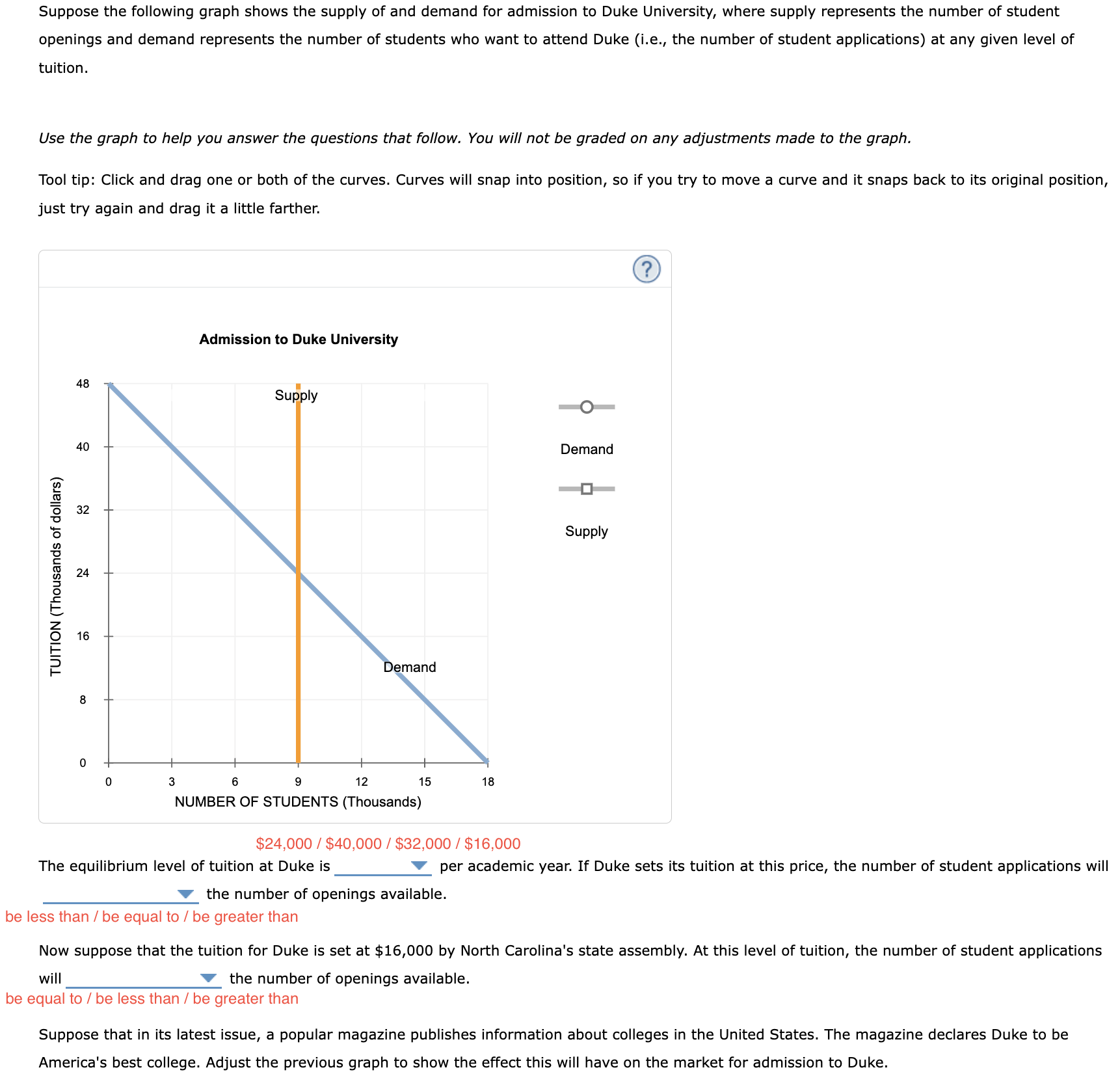Home /
Expert Answers /
Economics /
suppose-the-following-graph-shows-the-supply-of-and-demand-for-admission-to-duke-university-where-pa901
(Solved): Suppose the following graph shows the supply of and demand for admission to Duke University, where ...
Suppose the following graph shows the supply of and demand for admission to Duke University, where supply represents the number of student openings and demand represents the number of students who want to attend Duke (i.e., the number of student applications) at any given level of tuition. Use the graph to help you answer the questions that follow. You will not be graded on any adjustments made to the graph. Tool tip: Click and drag one or both of the curves. Curves will snap into position, so if you try to move a curve and it snaps back to its original position, just try again and drag it a little farther. The equilibrium level of tuition at Duke is per academic year. If Duke sets its tuition at this price, the number of student applications wil the number of openings available. less than / be equal to / be greater than Now suppose that the tuition for Duke is set at by North Carolina's state assembly. At this level of tuition, the number of student applications will the number of openings available. equal to / be less than / be greater than Suppose that in its latest issue, a popular magazine publishes information about colleges in the United States. The magazine declares Duke to be America's best college. Adjust the previous graph to show the effect this will have on the market for admission to Duke.
The new equilibrium level of tuition at Duke is per academic year. 3,000 If the magazine declares Duke to be America's best college and the tuition for Duke is set at by North Carolina's assembly, Duke will receive applications for admission than there are openings. more / fewer
Expert Answer
From the above graph We can see that the the equilibri

![The new equilibrium level of tuition at Duke is per academic year.
\[
\$ 16,000 / \$ 32,000 / \$ 8,000 / \$ 40,000
\]
3,000 I](https://media.cheggcdn.com/media/a2a/a2ac220f-be06-4a4d-9e9e-9a1ac2205484/phpoq2B6v)